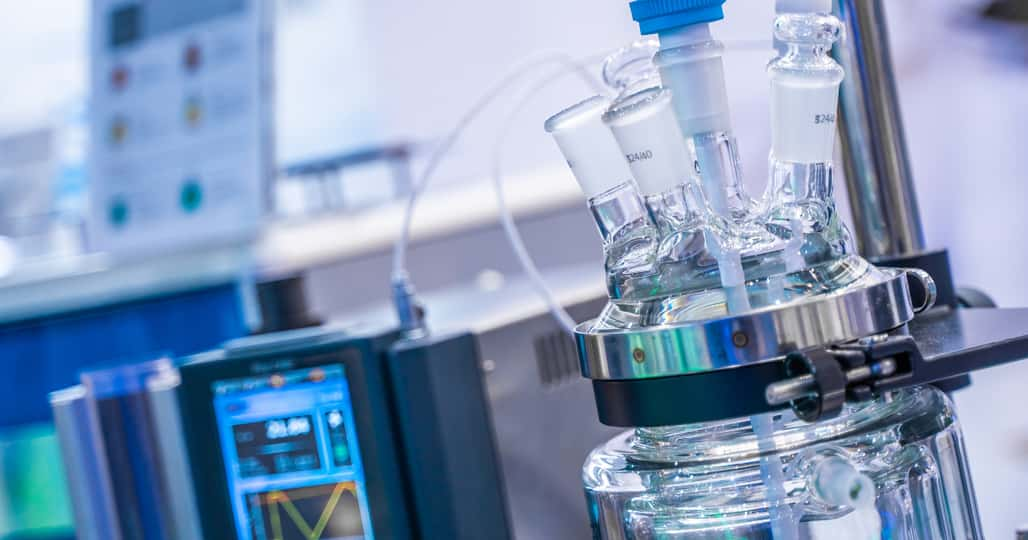With more patients requiring better medical treatments, an increasing number of orphan drug formulations, and the surging demand for personalized medicines, the prospects of the biotech industry appear robust. Also, government initiatives, modernization of regulatory framework, and adoption of cutting-edge technologies open new avenues for the market.
Given the industry’s shiny prospects, investors could consider buying fundamentally sound biotech stocks Harmony Biosciences Holdings, Inc. (HRMY - Get Rating), Esperion Therapeutics, Inc. (ESPR - Get Rating), and Entrada Therapeutics, Inc. (TRDA - Get Rating) for potential gains.
According to IQVIA Institute, global medicine spending and demand are expected to reach $2.30 trillion by 2028, with more patients requiring better treatment and medicines, especially in immunology, endocrinology, and oncology. Also, the global use of medicines grew by 14% over the past five years and is expected to grow 12% through 2028, bringing annual use to 3.8 trillion.
Moreover, biotech will represent around 39% of worldwide spending and include breakthrough cell and gene therapies and a maturing biosimilar segment.
The White House recently launched the National Bioeconomy Board as an important step toward realizing the potential of biotechnology for the U.S. economy. The Board will work with partners in public and private sectors to advance societal well-being, national security, sustainability, economic productivity, and competitiveness through biotechnology and biomanufacturing.
Vision Research expects the U.S. biotechnology market to reach $1.78 trillion by 2033, growing at a CAGR of 12.5%, driven by technological advancements, rising investments by pharmaceutical companies, and high demand for medication and therapies amid a rapidly aging population and rising prevalence of chronic diseases.
Further, the biotech industry has witnessed significant advancements in recent years, including CRISPR-Cas9 technology, synthetic biology, immunotherapy, 3D bioprinting, gene therapy, and AI and machine learning. The global artificial intelligence (AI) in the biopharmaceutical market is projected to hit $14.07 billion by 2032, expanding at a CAGR of 32.3%.
Additionally, investors’ interest in biotech stocks is evident from the SPDR Series Trust SPDR S&P Biotech ETF’s (XBI) 19.5% returns over the past six months.
In light of these encouraging trends, let’s look at the fundamentals of the three best value Biotech stocks, beginning with number 3.
Stock #3: Harmony Biosciences Holdings, Inc. (HRMY - Get Rating)
HRMY is a commercial-stage pharmaceutical company that focuses on developing and commercializing therapies for patients with rare and other neurological diseases. The company offers WAKIX (pitolisant), a molecule with a novel mechanism for treating excessive daytime sleepiness with narcolepsy, and HBS-102, a melanin-concentrating hormone receptor 1.
In terms of forward non-GAAP P/E, HRMY is trading at 8.21x, 57.9% lower than the industry average of 19.52x. Similarly, the stock’s forward EV/Sales multiple of 2.14 is 38.7% lower than the industry average of 3.49. Further, its forward Price/Sales of 2.39x is 32.8% lower than the industry average of 3.55x.
On April 30, HRMY acquired Epygenix Therapeutics, Inc., which will accelerate its growth strategy by adding a rare epilepsy franchise to its expanding late-stage pipeline of innovative CNS assets. The acquisition includes clemizole hydrochloride (EPX-100), a potent, oral, centrally-acting serotonin (5HT2) agonist.
On April 11, HRMY entered an exclusive licensing agreement with Bioprojet to develop, manufacture, and commercialize TPM-1116, a highly potent and selective oral orexin-2 receptor (OX2R) agonist to be evaluated for treating narcolepsy and other sleep/wake disorders.
For the first quarter that ended March 31, 2024, HRMY’s revenue grew 29.8% year-over-year to $154.61 million. The company’s gross profit of $127.13 million indicates growth of 29.3% from the prior year’s quarter. Its non-GAAP adjusted net income came in at $50.72 million and $0.88 per share, up 24.5% and 31.3% year-over-year, respectively.
Furthermore, the company’s total current assets stood at $479.50 million as of March 31, 2024, compared to total current assets of $451.07 million as of December 31, 2023.
Analysts expect HRMY’s revenue for the third quarter (ending September 2024) to grow 16.8% year-over-year to $187.22 million, and its EPS is expected to increase 15% year-over-year to $0.72 for the same period. Moreover, the company has surpassed the consensus revenue estimates in three of the trailing four quarters.
Over the past month, the stock has surged 3.1% and 3.2% over the past six months to close the last trading session at $29.95.
HRMY’s bright prospects are reflected in its POWR Ratings. The stock has an overall rating of B, which translates to a Buy in our proprietary rating system. The POWR Ratings are calculated by considering 118 different factors, each weighted to an optimal degree.
HRMY has an A grade for Value and Quality. It is ranked #28 out of 357 stocks in the Biotech industry.
To check other POWR Ratings of HRMY for Growth, Momentum, Stability, and Sentiment, click here.
Stock #2: Esperion Therapeutics, Inc. (ESPR - Get Rating)
ESPR is a pharmaceutical company that develops and commercializes medicines for treating patients with elevated low-density lipoprotein cholesterol (LDL-C). Its marketed products include NEXLETOL (bempedoic acid) and NEXLIZET (bempedoic acid and ezetimibe) tablets.
In terms of forward EV/EBITDA, ESPR is trading at 9.29x, 28.1% lower than the industry average of 12.92x. Likewise, the stock’s forward Price/Sales multiple of 1.25 is 64.9% lower than the industry average of 3.55. Also, its forward Price/Cash Flow of 5.93x is 62.6% lower than the industry average of 15.84x.
On May 22, ESPR and Daiichi Sankyo Europe GmbH announced that the European Commission approved the label update of both NILEMDO® (bempedoic acid) and NUSTENDI® (bempedoic acid/ezetimibe fixed-dose combination) as treatments for hypercholesterolemia and to reduce the risk of adverse cardiovascular events.
The decision to update the labels is based on the positive CLEAR Outcomes trial results, and it recognized them as the first and only LDL-C lowering treatments indicated for primary and secondary prevention of cardiovascular events.
On May 14, ESPR announced that the U.S. Patent and Trademark Office issued a U.S. Patent Term Extension certificate for bempedoic acid contained in NEXLETOL® Tablets and NEXLIZET® Tablets. The certificate extended the term by five years through December 3, 2030.
During the first quarter that ended March 31, 2024, ESPR’s total revenues increased 466.1% year-over-year to $137.73 million. The company’s income from operations was $72.27 million, against a loss from operations of $48.60 million during the previous year’s quarter.
In addition, the company’s net came in at $61.02 million or $0.34 per common share for the quarter, respectively. Its cash and cash equivalents stood at $226.61 million as of March 31, 2024, versus $82.25 million as of December 31, 2023.
Analysts expect ESPR’s revenue for the second quarter (ending June 2024) to increase 81.5% year-over-year to $46.79 million. For the fiscal year 2024, the company’s revenue is expected to grow 178.1% year-over-year to $323.50 million. Also, the company topped the consensus revenue estimates in all of the four trailing quarters.
Shares of ESPR have gained 70.4% over the past six months and 34.8% over the past year to close the last trading session at $2.13.
ESPR’s POWR Ratings reflect its robust outlook. The stock has an overall rating of B, translating to a Buy in our proprietary rating system.
ESPR has an A grade for Growth. It also has a B grade for Quality and Value. It is ranked #14 among 357 stocks within the Biotech industry.
To see the other ratings of ESPR for Sentiment, Momentum, and Stability, click here.
Stock #1: Entrada Therapeutics, Inc. (TRDA - Get Rating)
TRDA, a clinical-stage biotechnology company, develops endosomal escape vehicle (EEV) therapeutics for the treatment of multiple neuromuscular diseases. The company’s EEV platform develops a portfolio of oligonucleotide, antibody, and enzyme-based programs.
In terms of forward EV/Sales, TRDA is trading at 1.54x, 55.9% lower than the industry average of 3.49x. Likewise, the stock’s forward Price/Sales multiple of 3.37 is 5.2% lower than the industry average of 3.55.
TRDA’s trailing-12-month EBIT margin of 14.57% is 979.2% higher than the industry average of 1.35%. Likewise, the stock’s trailing-12-month net income margin of 14.42% compares favorably to the industry average of negative 4.21%. Its trailing 12-month EBITDA margin of 16.56% is higher than the 5.79% industry average.
During the first quarter that ended March 31, 2024, TRDA’s collaboration revenue increased 134% year-over-year to $59.12 million, and its income from operations came in at $21.11 million for the quarter. The company’s net income was $23.50 million or $0.68 per share, against a net loss of $6.67 million or $0.21 per share in the prior year’s quarter, respectively.
In addition, the company’s total assets were $510.84 million as of March 31, 2024, compared to $469.19 million as of December 31, 2023.
Street expects TRDA’s revenue for the second quarter (ending June 2024) to increase 98.5% year-over-year to $36.08 million. Similarly, for the fiscal year 2024, the company’s revenue is expected to grow 10.6% year-over-year to $142.63 million. Furthermore, the TRDA has surpassed the consensus revenue estimates in each of the trailing four quarters.
TRDA’s stock has gained 31.7% over the past six months and 18.7% over the past year to close the last trading session at $15.13.
TRDA’s sound fundamentals are reflected in its POWR Ratings. The stock has an overall rating of A, which translates to a Strong Buy in our proprietary rating system.
The stock has an A grade for Sentiment and a B for Value and Quality. Within the same industry, TRDA is ranked #6 among the 357 stocks.
Click here to access additional ratings of TRDA for Stability, Growth, and Momentum.
What To Do Next?
Get your hands on this special report with 3 low priced companies with tremendous upside potential even in today’s volatile markets:
3 Stocks to DOUBLE This Year >
Want More Great Investing Ideas?
HRMY shares were trading at $29.54 per share on Tuesday morning, down $0.41 (-1.37%). Year-to-date, HRMY has declined -8.54%, versus a 11.80% rise in the benchmark S&P 500 index during the same period.
About the Author: Rjkumari Saxena

Rajkumari started her career as a writer but gradually shifted her focus to financial journalism, leveraging her educational background in Commerce. Fascinated by the interplay of business and economic shifts in equities, she aspires to evolve as an analyst. With a knack for simplifying complex financial concepts, her mission is to empower investors with insights that lead to profitable decisions. More...
More Resources for the Stocks in this Article
| Ticker | POWR Rating | Industry Rank | Rank in Industry |
| HRMY | Get Rating | Get Rating | Get Rating |
| TRDA | Get Rating | Get Rating | Get Rating |
| ESPR | Get Rating | Get Rating | Get Rating |






